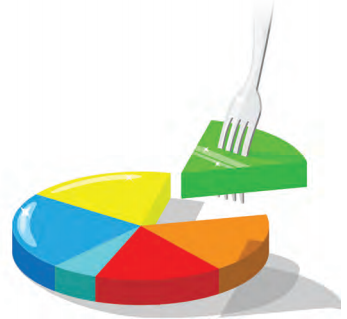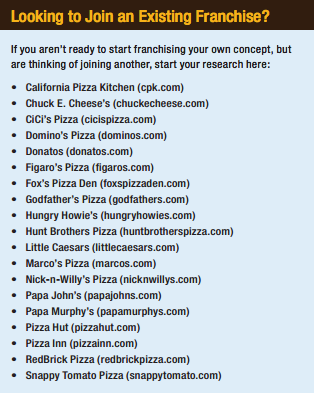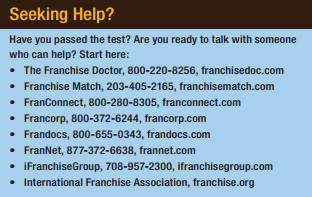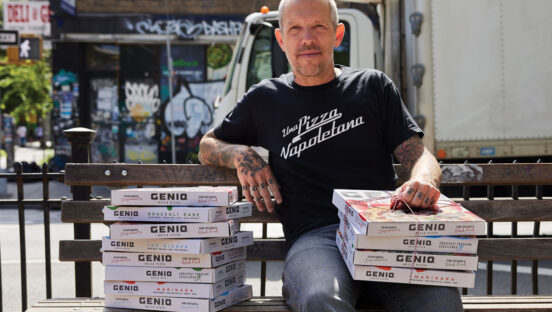 The pizza industry is no stranger to franchising—a great way to expand a brand’s reach, maintain consistency with current practices, and leverage the time, money and motivation of new pizzeria owners. How does your business model stack up when it comes to franchisability? Answer the 10 questions in this
The pizza industry is no stranger to franchising—a great way to expand a brand’s reach, maintain consistency with current practices, and leverage the time, money and motivation of new pizzeria owners. How does your business model stack up when it comes to franchisability? Answer the 10 questions in this
Franchisability Quiz and use the easy-to-follow point system to determine whether your pizzeria is ready to franchise—and what steps will help you get there.
1. Do you have an operating prototype?
No: 1 point
Yes: 10 points
We’ll start with the biggest question first. If you do not have an operating prototype, there is nothing to replicate. Having an operating prototype in place allows you to prove that your business is profitable and helps work out any kinks in your operation. When buying a franchise, franchisees are looking for existing brands with experienced operations that have been tested in the marketplace. Your pizzeria prototype and location(s) are primary tools to generate inquiries from customers—potential franchisees—who may be interested in your restaurant and are looking for the ideal center for training new franchisees. Having a prototype is the initial proof of concept required for establishing franchisability.
2. How many units do you operate?
Assign 1 point per unit (up to 10). Before franchising begins, the number of units in operation correlates with the franchisability of the operation. If your pizzeria has more than one location, you have already proven that your concept can be replicated. Multiple buildouts, hiring new staff, multiunit POS systems, and increased management responsibilities are factors associated with the practice of duplication; this makes expansion easier down the road. A pizzeria with one location may be as franchisable as a pizzeria with 10 locations, but additional units aid in the salability of the franchise, the strength of the brand and the refinement of the concept. Most businesses turn to franchising because of limitations in the owner’s or operator’s capital, time or access to people. Depending on the investment of opening another unit, it may be more cost-effective to franchise than to open another corporate-owned location.
3. How long has it been since you first opened your business?
Not in operation yet: 0 points
Less than six months: 2 points
One year: 4 points
Two years: 6 points
Three years: 8 points
Four years or more: 10 points
Understandably, being in business for a longer period of time allows you to establish your business’ concept in the marketplace, develop a brand and create a track record of success. Additionally, more time in business is typically associated with greater systemization, although this is not always the case.
 4. To what degree is your business distinctive from its competitors?
4. To what degree is your business distinctive from its competitors?
Not very: 0 points
Somewhat: 3 points
Very: 7 points
One-of-a-kind: 10 points
Your degree of uniqueness is not solely based on your sauce, dough or style of pizza, but on your systems of operation, as well. More importantly than the product, what makes your pizzeria unique can be customer service, culture, aggressive advertising, catering to late-night crowds, ready-to-serve pizzas, a drive-thru window, or a distinctive feel or theme running through the restaurant. Surely you have been to a large pizza chain and felt that your product is better, but the systems of operation are what separate successful and unsuccessful franchise companies.
5. How much would it cost to open one of your locations, not including franchise fees?
$400,000 or more: 2 points
$200,000 to $399,000: 4 points
$100,000 to $199,000: 6 points
$50,000 to $99,000: 8 points
Less than $50,000: 10 points
Logically, the lower the initial investment needed to duplicate your pizzeria, the larger the pool of prospective franchisees. As you continue to expand, you can help reduce the initial investment in several ways. Landlords are eager to fill empty space, and you may be able to negotiate a significant amount of tenant improvement dollars to offset leasehold improvement investments. Equipment vendors are frequently able to offer discounts and special leasing arrangements for increased volume. Pizzerias may also create different business models to meet different investment levels. A location that is full-service or carryout/delivery-only, for example, may be ideal for specific demographics or investment levels.
6. The market for your business is:
Local: 0 points
Regional: 3 points
National: 8 points
International: 10 points
This question is centered on the potential for your product, not your current market. The great thing about pizza is that people eat it everywhere. Specific toppings may vary in specific markets (sardine pizza, anyone?), but the product itself should be applicable to any market in the world.
7. Competition for the products or services you sell is:
High: 1 point
Moderate: 5 points
Minimal: 10 points
In the pizzeria business, competition is always high. The ingredients in your pizza and the style in which you present it can make a difference, but the industry is very localized and inhabited by both large chains and small independent operations. Customer service, loyalty cards, community awareness, price, take-and-bake options, buffets and supporting menu items are all ways of differentiating your product in the market.
8. How systemized is your business?
Not very: 0 points
Some policies and/or handbooks: 2 points
Very well systemized and documented: 6 points
Highly systemized and computerized: 10 points
The more operational systems your pizzeria has in place, the easier it is to create consistency among your franchisees. These systems include recipes, POS systems, websites, hiring and firing procedures, even schedules for cleaning the bathrooms. If executed fully, even the simplest tasks can help establish a system for success. The more holes that exist in your systems of operation, the more gaps that franchisees will need to fill on their own. While certain issues may seem like no-brainers to you, a new franchisee may address a situation in a way that can dilute or negatively impact your brand. Think of your operational manual as the answer key for your franchisee when a problem or question arises. The best way to start off with systemizing your concept is to document everything you do. Doing this will help you realize where you may be inconsistent in certain aspects and help you address any problem areas before they are replicated in a large franchise system.
9. How long would it take to teach someone how to operate your business?
Special certification needed: 1 point
Two to six months: 2 points
One to two months: 4 points
One to three weeks: 7 points
One week or less: 10 points
The shorter the training period for a new franchisee, and the easier it is to learn your system of operation, the faster a franchisee can be become operational and profitable. This is not to say that if it requires four months of training to be an effective operator, you should find a way to whittle this down to two weeks. The most important aspect of training is ensuring that your franchisees are familiar with all of the details of running their own locations successfully. As an organization grows in complexity, not only is there greater room for error, but the franchisee requires additional working capital, as he’ll need to pay his own salary while training
10. How do your business sales compare with those of comparable businesses in your industry?
Much lower: 0 points
Somewhat lower: 1 point
About the same: 3 points
Somewhat higher: 7 points
Much higher: 10 points
Comparable sales are an important factor in determining your franchisability, because they demonstrate your competitive advantages in the marketplace. This is also an indication of how well you run your restaurant, the strength of your brand, and your ability to adapt to a constantly changing competitive environment Additionally, system-wide sales and profits help determine the capitalization a franchisor will have for advertising and growing his franchise. Undercapitalization can have dramatic effects on marketing, innovation and the ultimate success of your franchise growth. While you are legally prevented from telling a prospective franchisee how much he can make, limiting your ability to market this issue, franchisees who are happy and run profitable businesses can discuss their individual sales and profits. These franchisees are likely to promote and endorse the franchise to others and purchase additional units. However, comparable sales comprise only a portion of determining franchisability. Many franchisees also place emphasis on support, training, systems, marketing, branding and other related benefits when deciding to purchase a franchise.
So how do you measure up? Compare your score against the following scale to see if franchising is a good fit for your business:
0-39: Not quite ready. Continue building while keeping the overall goal of franchising in mind.
40-59: Close, but the likelihood of your success is in question, perhaps due to capitalization.
60-79: Chances appear quite good. You should take a serious look at utilizing franchising for expansion.
80-100: Outstanding potential for franchising. Go for it!

While this quiz is not a foolproof formula for determining franchisability, this guide will help you make an educated decision when evaluating the future growth of your business. Consult an industry expert to learn more about franchising and for further analysis of your concept and systems in regard to franchise expansion.














